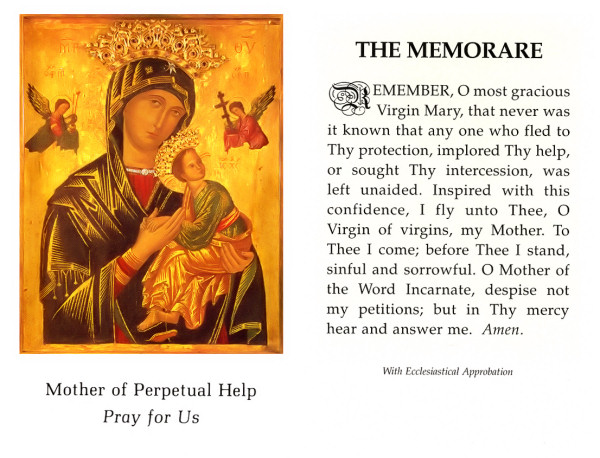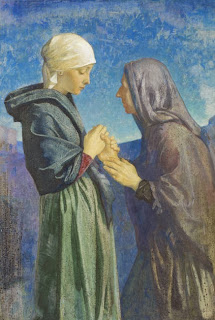Pedro Calungsod: Missionary... Martyr... Saint
I have been living the missionary life for the past 12 years. Many times, I need to "die" to myself, face persecutions with humility of heart, and submit completely to the will of God. Being a missionary is not a perfect life. But no matter what, it is a life worth living.
Today, World Mission Sunday, I honor all the missionaries around the world, who have selflessly devoted their life to spread the Good News about God, transform lives and inspire more people to strive to be living witnesses of God's unconditional love.
Significantly, it is also an honor for me to witness a fellow Filipino and Missionary canonized to sainthood - Saint Pedro Calungsod.
Reading more about his life, I am deeply inspired by his courage, loyalty, humility, and faith. A young boy, with so much of life ahead, committed to serve God in a foreign land. A choice, which not many young people his age would dare to make. But it was a choice that will change many lives forever.
I am personally grateful to St. Pedro Calungsod's shining example. He provided an innocent and pure face to what a true missionary should be. He made me realize even more that a life for God is not only a life worth living but a life worth dying for as well. It is only with God that death is not the end, but the beginning of eternal life.
THE MISSIONARY AND MARTYR
Pedro Calungsod, around 14, was among the young exemplary catechists chosen to accompany the Jesuits in their mission to the Ladrones Islands (Islas de los Ladrones or “Islands of Thieves”). Around 1667, these were later named Marianas (Las Islas de Mariana) in honor of Queen Maria Ana of Austria who supported the mission.
Life in the Ladrones was hard. The provisions for the Mission did not arrive regularly; the jungles were too thick to cross; the cliffs were very stiff to climb, and the islands were frequently visited by devastating typhoons. Despite the hardships, the missionaries persevered, and the Mission was blessed with many conversions.
On 15 June 1668, San Vitores and a band of five other Jesuits arrived on Guam, the southernmost and largest island in a cordillera of fifteen volcanic islands. With the missionaries came a garrison of thirty soldiers, many of them colonials from the Philippines, whose responsibility was to protect the missionaries and to pacify the local people if need should arise.
At this time, Spanish missionaries were actively converting Chamorros to Roman Catholicism. This relationship was peaceful at the beginning with the Spaniards, who were led by San Vitores. The initial reception of the missionaries by the Chamorro people was enthusiastic and reassuring.
A man named Choco became envious of the prestige that the missionaries were gaining among the Chamorros. He started to spread rumors that the baptismal water of the missionaries was poisonous. Because some sickly Chamorro infants who had been baptized died, many believed Choco and eventually apostatized. Choco found an ally in the local medicine man, Macanjas, and the Urritaos, young native men who were given to some immoral practices. These, along with the apostates, began to persecute the missionaries, many of whom were killed.
On April 2, 1672, at around seven o’clock in the morning, Pedro – by then already about seventeen years old – and San Vitores came to the village of Tomhom [Tumhon; Tumon], in Guam. There, they were told that a baby girl was recently born in the village; so they went to ask the child’s father, named Matapang, to bring out the infant for baptism. Matapang was a Christian and a friend of the missionaries, but having apostatized, he angrily refused to have his baby christened.
It is unclear whether San Vitores came unannounced or if he had been invited into the home by Matapang’s wife.
To give Matapang some time to cool down, Padre Diego and Pedro gathered the children and some adults of the village at the nearby shore and started chanting with them the truths of the Catholic Faith. They invited Matapang to join them, but the apostate shouted back that he was angry with God and was already fed up with the Christian teachings.
When Matapang learned of the baptism, he became even more furious. He violently hurled spears first at Pedro. Witnesses said that Pedro had all the chances to escape because he was very agile, but he did not want to leave Padre Diego alone. Those who personally knew Pedro believed that he would have defeated his fierce aggressors and would have freed both himself and Padre Diego if only he had some weapon because he was a valiant boy; but Padre Diego never allowed his companions to carry arms.
Finally, Pedro got hit by a spear at the chest and he fell to the ground. Hirao immediately charged towards him and finished him off with a blow of a cutlass on the head. Padre Diego could not do anything except to raise a crucifix and give Pedro the final sacramental absolution. After that, the assassins also killed Padre Diego.
Matapang took the crucifix of Padre Diego and pounded it with a stone while blaspheming God. Then, both assassins denuded the bodies of Pedro and Padre Diego, dragged them to the edge of the shore, tied large stones to their feet, brought them on a proa to sea and threw them into the deep. Those remains of the martyrs were never to be found again.
Matapang took the crucifix of Padre Diego and pounded it with a stone while blaspheming God. Then, both assassins denuded the bodies of Pedro and Padre Diego, dragged them to the edge of the shore, tied large stones to their feet, brought them on a proa to sea and threw them into the deep. Those remains of the martyrs were never to be found again.
The companion missionaries of Pedro remembered him to be a boy with a very good disposition, a virtuous catechist, a faithful assistant, a good Catholic whose perseverance in the Faith even to the point of martyrdom proved him to be a good soldier of Christ.
BEATIFICATION AND SAINTHOOD
Blessed John Paul II, wanting to include young Asian laypersons in his first beatification for the Jubilee Year 2000, paid particular attention to the cause of Calungsod. He was beatified on March 5, 2000 at Saint Peter’s Square in Rome.
On December 19, 2011, the Holy See officially approved the miracle qualifying Calungsod for sainthood by the Roman Catholic Church. The recognised miracle dates from 2002, when a Leyte woman who was pronounced clinically dead by accredited physicians two hours after a heart attack was revived when a doctor prayed for Calungsod’s intercession.
(Research References on the life of St. Pedro Calungsod : excerpts from About Pedro Calungsod, SunStar.com and Life of a Martyr, pedrocalungsod.net)
Make a petition through the intercession of Pedro Calungsod, and pray one Our Father, one Hail Mary and one Glory Be. Prayer to St. Pedro Calungsod
Contributed by: Samantha Catabas Manuel
Coffee Moments with Sam
Make a petition through the intercession of Pedro Calungsod, and pray one Our Father, one Hail Mary and one Glory Be. Prayer to St. Pedro Calungsod
Contributed by: Samantha Catabas Manuel
Coffee Moments with Sam




San Pedro Calungsod has been proposed here in the Philippines as a patron saint of young people and also of Overseas Filipino Workers, known as 'OFWs'. About ten percent of the Philippines' 90 million or so people are overseas. Many are great witnesses to our Catholic faith. I pray that young Filipinos born overseas will not lose the faith of their ancestors. May San Pedro be an inspiration to them.
ReplyDelete